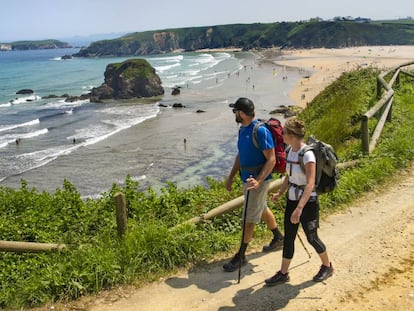Striking Spanish getaways for 2019
From the multicolored waterfall in La Palma to the giant geode of Pulpí, Almería, here are 23 destinations ranging from the popular to the obscure
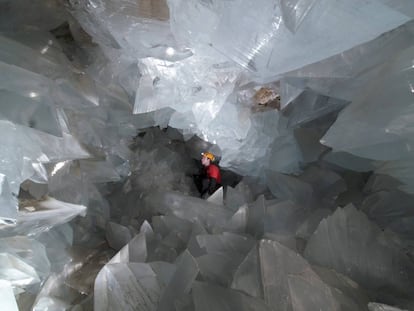
A cave filled with crystals, a museum of smells, a mysterious forest of 100-year-old yew trees, Spain’s most photogenic beach and a multi-colored waterfall – we give you a taste of some of the country’s most striking destinations.
1. Jewels of nature
The Pulpí geode, Almería
The giant geode of Pulpí is one of the biggest of its kind, discovered 20 years ago by a group of spelunkers inside an old 50-meter-deep silver mine. The geode itself, which is eight meters long, three wide and almost two high, is covered by massive selenite prisms of startling clarity. The site will be opened to the public this year.
2. Crafts
Sotosalbos, Segovia
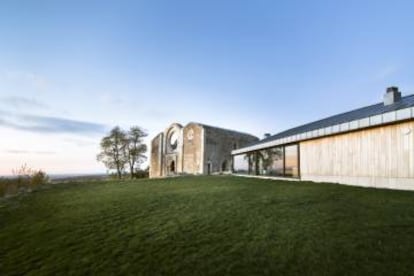
In 2012, biologist Elena Goded Rambaud snapped up the ruins of the Santa María de la Sierra monastery near Sotosalbos and fashioned an ultra modern space for her Ábbatte project, which involves a team of local artisans who use ancient techniques to weave rugs, shawls, blankets and other textiles as well as hosting courses. Visitors are welcome.
3. A landscape
Cárcavas del Pontón de la Oliva, Guadalajara
Enormous needle-like formations shaped by water rushing through a red sandstone gulley are the main feature of this Martian landscape 80 km from Madrid between the towns of Patones and Alpedrete de la Sierra. The site is accessed by the parking lot in Pontón de la Oliva, an old dam from the middle of the 19th century that has fallen into disuse but which once supplied Madrileños with their water.
4. A trail
Parrizal de Beceite, Teruel
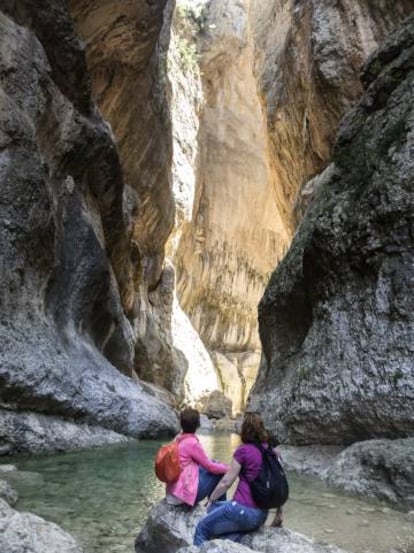
Some of the prettiest towns in Aragón can be found in Teruel province by the Matarraña river, such as Valderrobres and Beceite. On the last leg of the Parrizal trail, hikers cross wooden footbridges, walk through stunning gorges and refresh their weary feet in clear water pools.
5. A mountain
Peña Ubiña, Asturias and León
This iconic peak, which stands at 2,417 meters on the border between Lena in Asturias and San Emiliano in León in the region of Babia, is visible no matter where you are in the Cantabrian mountain range. Easy to scale from either side, it is a classic climb for aspiring mountaineers.
6. A Christmas wood
Acebal de Garagüeta, Soria
The biggest holly wood in Spain stretches over 406 hectares in Arévalo de la Sierra, Soria, and the prickly trees, with their seasonal red berries, provide refuge for the region’s thrushes and roebucks. There is also a center in Arévalo de la Sierra that provides information and offers guided tours through the wood.
7. A gorge
Congost de Mont-rebei, Huesca and Lleida
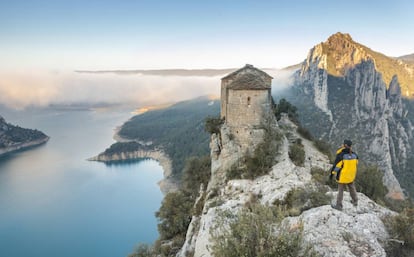
The Congost de Mont-rebei trail in the Montsec mountains that divide Aragón from Catalonia boasts a hanging bridge over the Sant Jaume gorge as well as the Montfalcó walkway whose 291 steps take you up 83 meters to look over the abyss. The route can be started in the Masiets parking lot, for those coming from Catalonia, or in the Casa Batlle, if coming from Aragón.
8. Art
Helga de Alvear Foundation, Cáceres
The Visual Arts Helga de Alvear Foundation Center is housed on the edge of the old town of Cáceres with more than 2,000 exhibits from Joseph Beuys to Marina Abramovic from Helga de Alvear’s contemporary art collection.
9. A winery
The Arandinos Estate, La Rioja
Small wineries can provide tourists with a soporifically pleasant couple of hours and if there’s a bed to lie down on at the end of it, what’s not to like? Tucked away in the Moncalvillo mountains is a winery complete with a hotel offering spectacular views, a restaurant and a spa. Prices start at €180.
10. A beach
La Gueirúa (Asturias)

The beach of Gueirúa features a sharp line of quartz and slate rocks that emerge from the sea. Around 18 km from Cudillero, this small cove is accessed by foot from the town of Santa Marina, following a path that ends in steps down to the beach – a photographer’s paradise.
11. A stairway
Climb to La Granja, Toledo
Architects José Antonio Martínez Lapeña and Elías Torres have come up with an idea to satisfy the demand for pedestrian access to Toledo’s historic old quarter: an escalator built into the Rodadero. From the parking lot at the bottom, tourists are now spirited up to the monuments of their choice in minutes.
12. A forest
Braña de los Tejos, Cantabria
The old celtic santuary of La Braña de los Tejos lies at the top of the Pasaneu pass that links Liébana with the coast, about 1,415 meters above sea level. Close by is a small forest of hundred-year-old yew trees, considered sacred by the locals prior to Roman times. After climbing up to the pass, you can follow a spectacular trail from San Pedro de Bedoya or Cícera that offers jaw-dropping views of the coastline and the Picos de Europa.
13. A sky view
Fregenal de la Sierra, Badajoz
Star-struck tourists can gaze at the night sky from this tourist complex in Fregenal de la Sierra in Badajoz. Three rustic cottages provide the accommodation while individual observatories with 12-inch telescopes allow you to study galaxies and lunar craters. The accommodation starts at €120 a night and the telescope hire costs €50 per night, dropping to €30 for each additional night.
14. An aroma
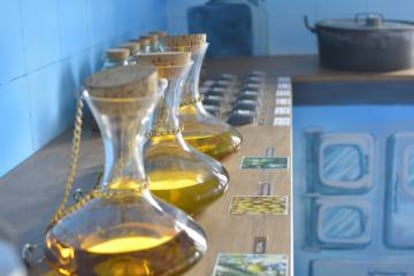
Museum of Smells, Burgos
The smell of the countryside after rain, a quince, freshly cut grass – these are just some of the aromas that can be experienced in the Museum of Smells in Santa Cruz de la Salceda in Burgos, inviting us to link each smell with memories, danger or falling in love.
15. A legend
San Andrés de Teixido A Coruña
This Gothic sanctuary can be found in the A Capelada mountains and, according to an old Galician saying, you’ll get there one day whether you like it or not – “Vai de morto quen non foi de vivo,” – those who do not visit while they are alive, will visit once they are dead. Pilgrims have traditionally taken three figures with them made from colored breadcrumbs –a man, a woman and a dove – called sanandresiños.
16. Time travel
Santa María la Real de Nieva, Segovia
Founded in 1393 by Queen Catherine of Lancaster in the middle of the Segovia countryside, this monastery combines Romanesque and Gothic architecture and is famous for the column capitals in its cloister, which depict the customs of the laborers, the nobility and the clergy of the era. The rural tasks undertaken over the 12 months of the year are also portrayed in arresting detail.
17. A city
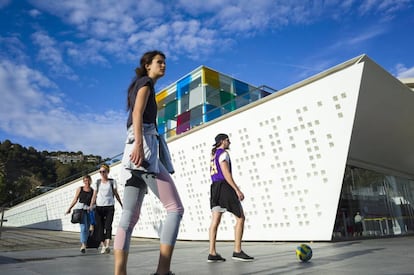
Málaga
This Andalusian city has been chosen as one of the top destinations for 2019 by European Best Destinations on account of its wealth of culture, including the Pompidou Center, the Russian Museum Collection, The Carmen Thyssen Museum, the Contemporary Art Center, the Automobile Museum and the Fashion Museum, the Aduana Palace and most notably the Picasso Museum, which is celebrating its 15th anniversary with an exhibition on the Andalusian origins of the artist.
18. A house
Ca n’Allunu, Mallorca
The house and gardens in Deià where the British writer Robert Graves lived from 1929 until his death in 1985 has been restored and are opened to the public on request for a fee of €7. If you were a fan of the series I, Claudius, this is your chance to see where the author penned his masterpieces. Mallorca also offers similar on-request visits to two buildings by Danish architect Jorn Utzon who designed the Sydney Opera House, namely Can Lis, in Portopetro, Santanyí, where he retired to in 1971, and Can Feliz, in S’Horta de Felanitx.
19. A park
Oyambre, Cantabria
The Oyambre natural park consists of 5,000 hectares of cliffs, rivers, dunes, meadows, beaches and coastal mountains inhabited by a variety of fauna. Located between Comillas and San Vicente de la Barquera, it has a network of trails, such as the Pájaro Amarillo – named after the plane that had to land on the Oyambre beach in 1929, giving visitors the chance to hike through this extraordinary landscape.
20. A flavor
Oil tourism in Ronda (Málaga)
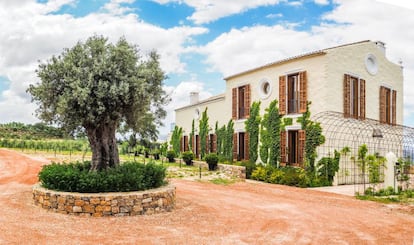
The ecological oil brand LA Organic has just opened its oil tourism estate in Ronda. Guided tours start at €20 per person with tastings and the chance to stay the night in the Azules farmstead. Its four rooms were designed by Philippe Starck and prices start from €170.
21. A region
El Goierri, Gipuzkoa
In the heart of Goierri, in the Basque Country, the Aralar mountains boast a fairytale landscape of groves and magical enclaves such as Akaitz and Txindoki, where the “latxa” sheep that give us Idiazábal cheese graze.
22. A view
Faja de las Flores, Huesca
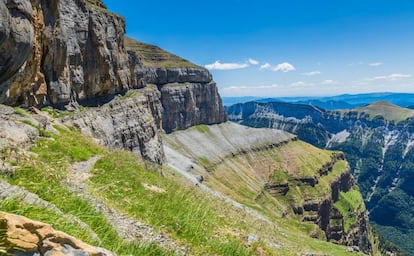
This is the most spectacular trail across the Ordesa valley in the Pyrenees. But while it offers one of the best views around, vertigo sufferers beware!
23. Hues
Cascada de los Colores, La Palma
At the bottom end of the Caldera de Taburiente on La Palma in the Canary Islands, the Taburiente river races along until it gets to the Angustias gorge where Rivanceras, one of the springs feeding into it, tips over the side of a narrow ravine, to create a multicolored waterfall.
English version by Heather Galloway.
Tu suscripción se está usando en otro dispositivo
¿Quieres añadir otro usuario a tu suscripción?
Si continúas leyendo en este dispositivo, no se podrá leer en el otro.
FlechaTu suscripción se está usando en otro dispositivo y solo puedes acceder a EL PAÍS desde un dispositivo a la vez.
Si quieres compartir tu cuenta, cambia tu suscripción a la modalidad Premium, así podrás añadir otro usuario. Cada uno accederá con su propia cuenta de email, lo que os permitirá personalizar vuestra experiencia en EL PAÍS.
¿Tienes una suscripción de empresa? Accede aquí para contratar más cuentas.
En el caso de no saber quién está usando tu cuenta, te recomendamos cambiar tu contraseña aquí.
Si decides continuar compartiendo tu cuenta, este mensaje se mostrará en tu dispositivo y en el de la otra persona que está usando tu cuenta de forma indefinida, afectando a tu experiencia de lectura. Puedes consultar aquí los términos y condiciones de la suscripción digital.
More information
Archived In
Últimas noticias
Most viewed
- Sinaloa Cartel war is taking its toll on Los Chapitos
- Oona Chaplin: ‘I told James Cameron that I was living in a treehouse and starting a permaculture project with a friend’
- Reinhard Genzel, Nobel laureate in physics: ‘One-minute videos will never give you the truth’
- Why the price of coffee has skyrocketed: from Brazilian plantations to specialty coffee houses
- Silver prices are going crazy: This is what’s fueling the rally


